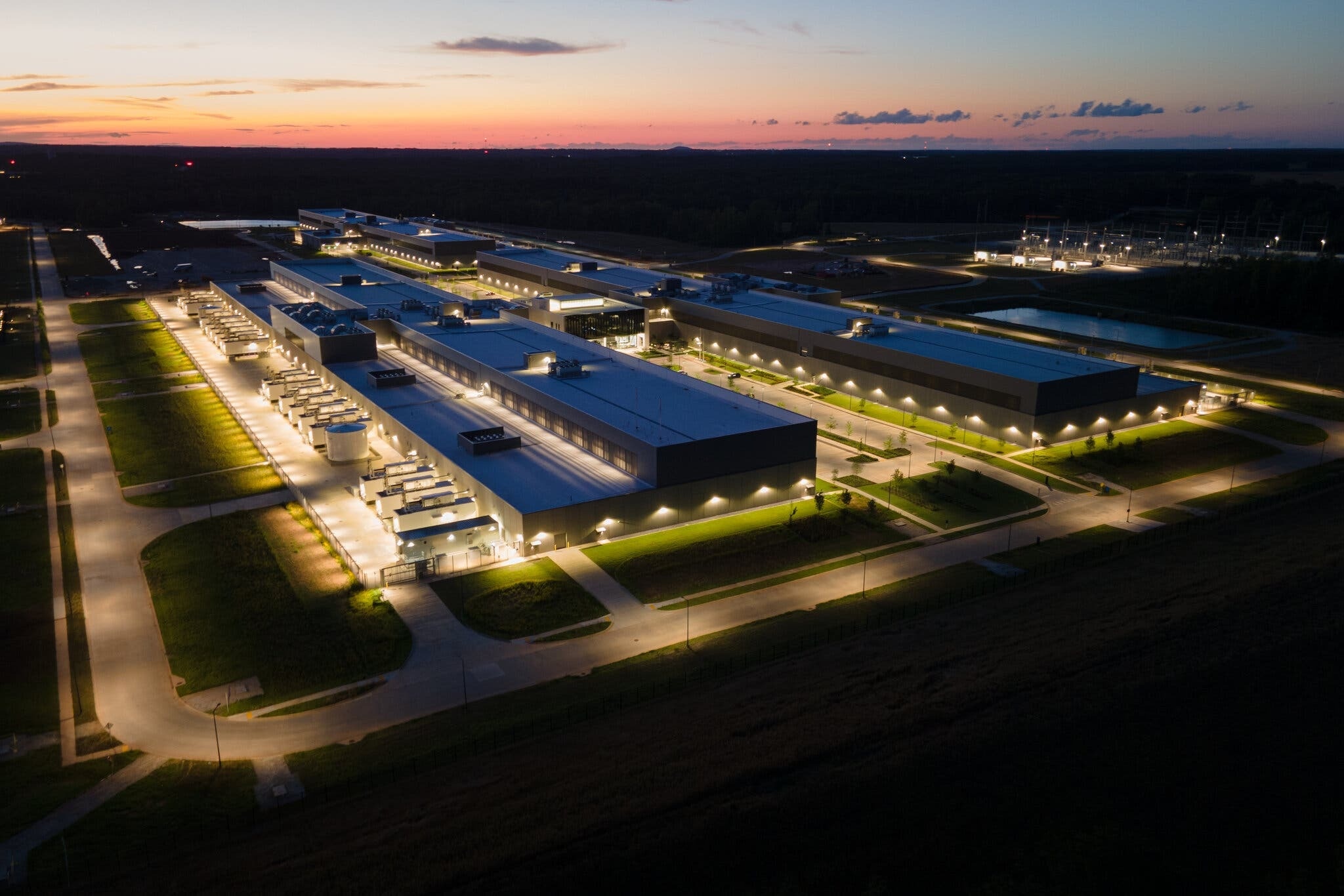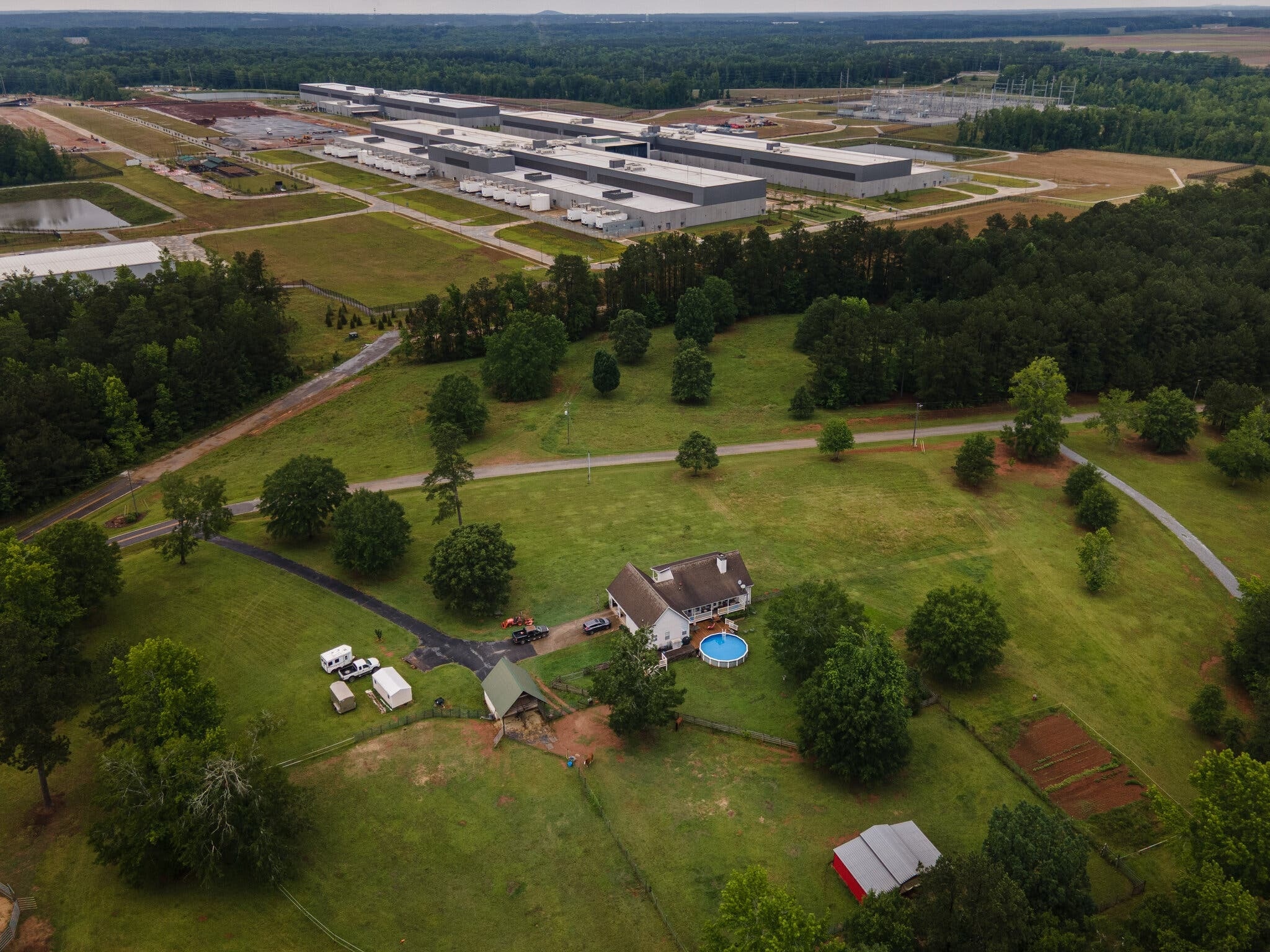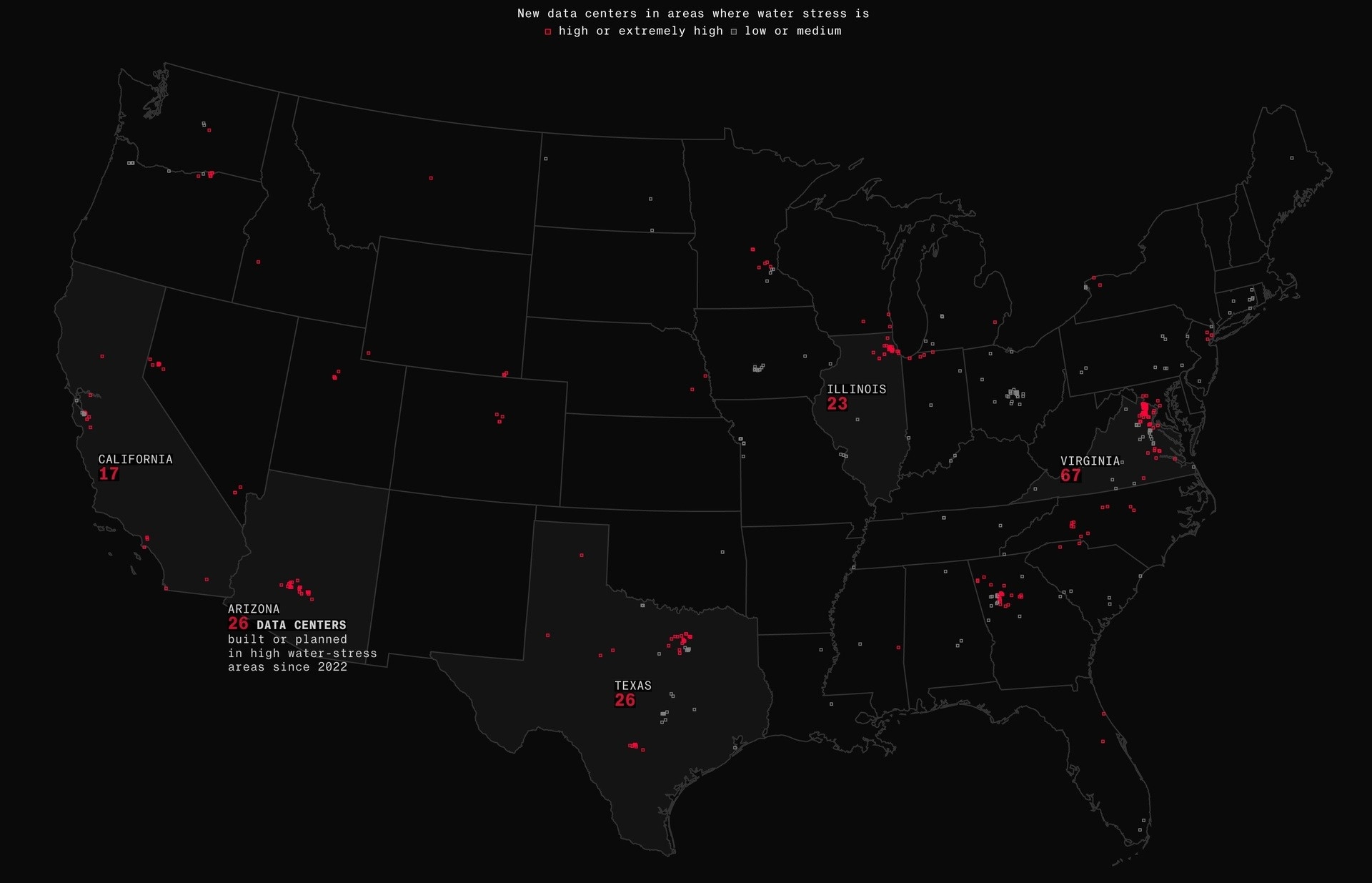
As Meta broke ground on its $750 million data center on the edge of Newton County, Georgia, the faucets in Beverly and Jeff Morris's home started running dry.
The couple’s home, which used well water, was more than 1,000 feet from Meta’s new data center. In 2018, just months after construction began, the Morrises’ dishwasher, ice maker, washing machine, and toilet all stopped working, said Beverly Morris, now 71.
Within a year, the water pressure had dropped to a trickle. Soon, nothing came out of the faucets in the bathroom and kitchen.
Essential Resources Threatened by AI
Jeff Morris, 67, eventually traced the problem to sediment buildup in the water. He believes it was Meta's construction that added sediment to the groundwater and affected their well water.
The couple then had to replace most of the equipment in 2019, and then again in 2021 and 2024. According to the latest report from a New York Times reporter, sediment is accumulating at the bottom of their backyard pool. Meanwhile, the faucet in one of their two bathrooms still doesn't work.
“It feels like we’re fighting an unwinnable battle that we never wanted to fight. I’m afraid to drink my own water,” said Morris.
 |
The Morris family home is more than 300 meters from Meta's new data center. Photo: New York Times. |
The Morris family's experience is just one of a growing number of water quality issues around Newton County, an hour and a half drive east of Atlanta and home to about 120,000 people.
As tech giants like Meta build more and more data centers in the region, local wells continue to fail, while municipal water costs skyrocket and even the county water board may face shortages of this vital resource.
The situation has become so dire that Newton County is on track to run out of water by 2030, according to a 2024 report. If the local water district fails to upgrade its facilities, residents could be forced to ration water.
Blair Northen, mayor of Mansfield, a town in Newton County, said that in just the next two years, water rates are expected to increase 33%, significantly more than the typical annual increase of 2%.
"Destroyer" of water resources
According to Bloomberg , about two-thirds of data centers built or planned to be built in the US by 2022 are located in water-stressed areas. Of those, 72% are located in five water-stressed states.
When users type commands into the AI chatbot, the system sends requests to the data center, contributing to the depletion of an increasingly scarce resource: water.
The problem has been around for years. Even before ChatGPT was introduced, communities complained about data centers consuming more than 3 million liters of water per day in cities with limited water reserves. The situation became more serious after ChatGPT sparked the generative AI craze.
 |
Jeff Morris, 67, blames Meta's construction for adding sediment to the groundwater and affecting their well water. Photo: New York Times. |
More than 160 AI data centers built in the U.S. in the past three years were located in areas of water stress, up 70% from the previous three-year period, according to data from the World Resources Institute and research firm DC Byte .
Similar trends are seen in other countries, including arid regions like the UAE and Saudi Arabia. Meanwhile, the proportion of data centers in arid regions in China and India is even higher than in the US.
When building AI data centers, companies tend to choose states and countries with abundant energy and favorable regulations. However, those areas lack abundant water supplies. As a result, data centers are threatening local water supplies, agriculture , and energy production, analysts say.
“This is a growing, widespread problem,” said Newsha Ajami, director of strategy and research development at Lawrence Berkeley National Laboratory and founding director of the urban water policy program at Stanford University.
There have been protests over water shortages caused by data centers in the Netherlands, Uruguay and Chile, with the Chilean government temporarily revoking Google’s permit to build a $200 million data center.
In the US, tech companies are expanding data centers in drought-prone states like Arizona and Texas, raising concerns about local water supplies.
“Everywhere in the state is facing this water-energy crisis,” said Amy Bush, a hydrologist at RMBJ Geo Inc. in Abilene, Texas, where OpenAI plans to build a 1.2-gigawatt data center to serve the Stargate project.
For years, Newton County was a growing suburb of Atlanta, until that future was stalled by the 2008 financial crisis. In response, local officials sought large industrial projects to fill the void.
By the late 2010s, data centers, with their ability to generate millions of dollars in tax revenue, were filling that need.
Meta’s project was the first major data center to come to Georgia in 2018. At the time, Gov. Brian Kemp, a Republican, celebrated with Facebook-branded shovels at the state Capitol.
 |
Many new data centers in the US are located in areas with high levels of water stress. Photo: Bloomberg. |
New tax incentives and cheap industrial electricity quickly made Georgia one of the nation’s top choices for new data centers. But the tax benefits quickly turned into a nightmare.
In recent months, nine companies have applied to build data centers, requesting 6 million gallons of water a day, said Mike Hopkins, executive director of Newton County Water and Wastewater, the county's water agency.
For comparison, that’s more than the county’s total daily water use. Some of the most notable applicants include major tech companies like Amazon, while others use pseudonyms to hide their identities, according to the permits.
Chris Manganiello, water policy director at Chattahoochee Riverkeeper, an environmental nonprofit in Georgia, could hardly believe his eyes when he saw the data on how much water AI centers use.
One data center company is using 9 million gallons of water a day, equivalent to 30,000 households. “That’s a huge amount,” Manganiello said.
Source: https://znews.vn/ac-mong-vi-tham-vong-moi-cua-meta-post1568724.html




















































![[Maritime News] More than 80% of global container shipping capacity is in the hands of MSC and major shipping alliances](https://vphoto.vietnam.vn/thumb/402x226/vietnam/resource/IMAGE/2025/7/16/6b4d586c984b4cbf8c5680352b9eaeb0)













































Comment (0)